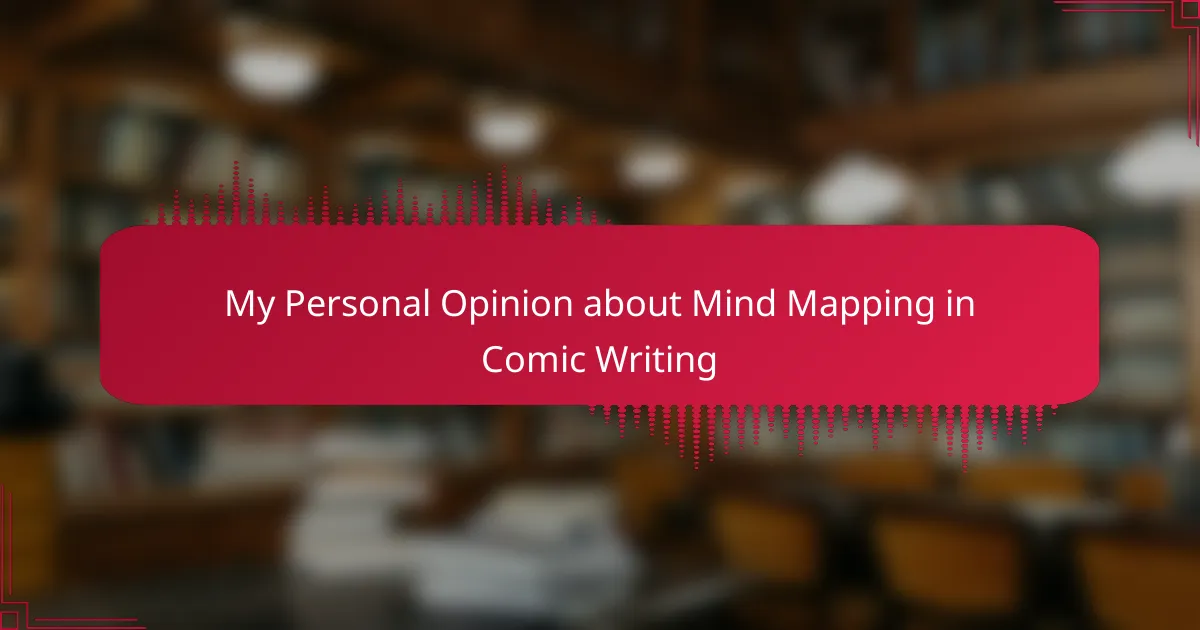Key takeaways
- Mind mapping enhances comic writing by visually organizing ideas, improving clarity, and fostering creativity.
- Using colors and images in mind maps can evoke emotions and deepen connections within narratives.
- This technique helps identify narrative gaps early, reducing writer’s block and streamlining the creative process.
- Regularly revising mind maps allows for the adaptation and growth of storylines, making them more cohesive.
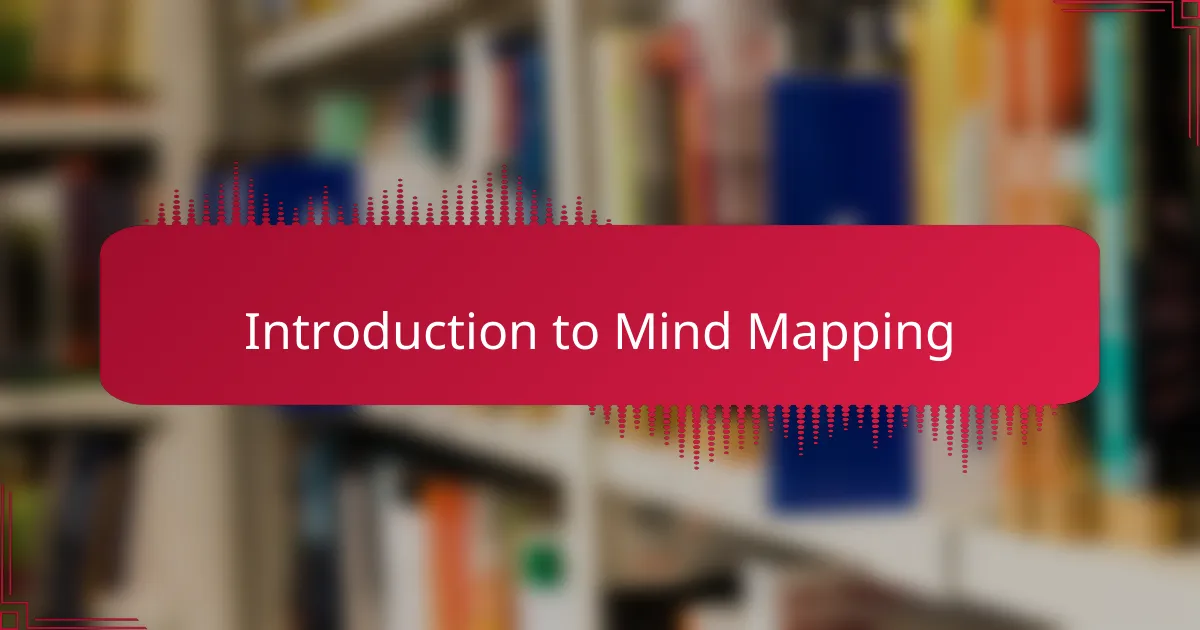
Introduction to Mind Mapping
Mind mapping is a tool that I find incredibly beneficial in the realm of comic writing. It allows for a visual representation of ideas, helping to organize thoughts in a way that feels both freeing and structured. I remember the first time I used mind mapping for a comic project; it transformed my scattered ideas into a coherent storyline, making the creative process feel less overwhelming and more exciting.
When it comes to comic writing, mind mapping can take your initial concepts and expand them into vibrant narratives. By visually linking characters, settings, and plot arcs, you can see the connections more clearly. This approach not only enhances creativity but also aids in identifying potential gaps in your story much earlier in the writing process.
- Create visual connections between characters and plot points.
- Easily identify gaps or inconsistencies in your narrative.
- Stimulate creativity by allowing for free association of ideas.
- Use colors and images to personalize your mind map.
- Simplify complex storylines into digestible components.
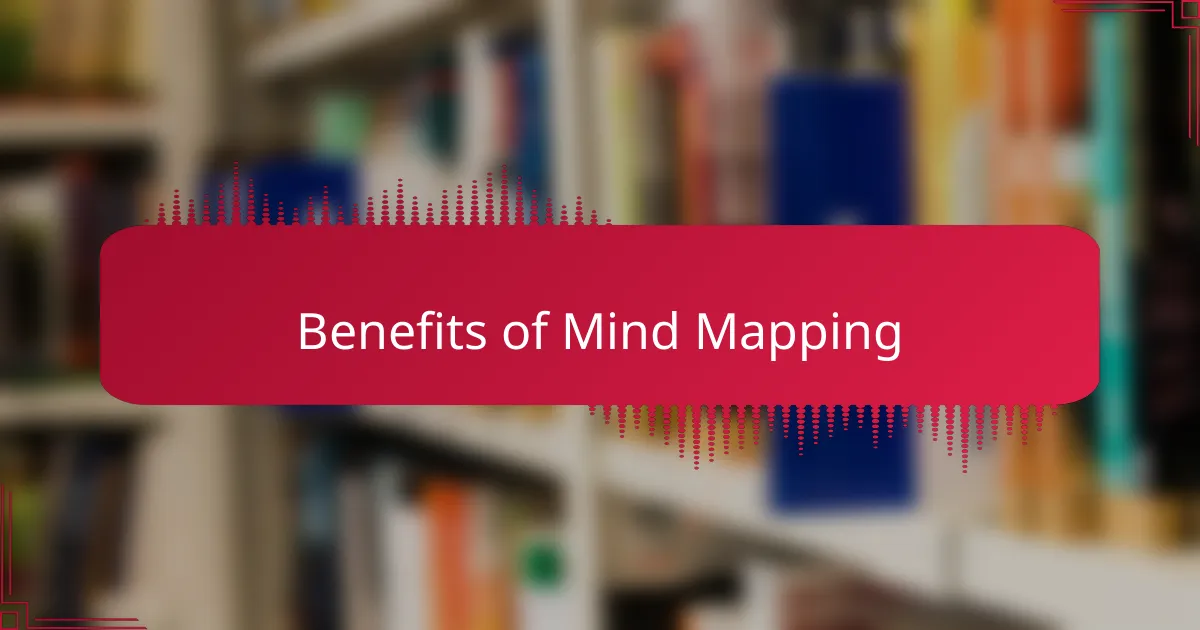
Benefits of Mind Mapping
Mind mapping has become an invaluable tool for my comic writing process. It allows me to visually organize my ideas, breaking down complex storylines into manageable parts. When I first started using mind mapping, I was pleasantly surprised by how it sparked my creativity, making connections I hadn’t considered before.
One of the key benefits I’ve experienced is the clarity it brings to character development. With a mind map, I can easily see relationships between characters, their motivations, and how they drive the plot. This method not only keeps my ideas structured but also keeps me excited about the story I am crafting.
In my experience, mind mapping can vastly reduce writer’s block. By putting my thoughts on paper in a non-linear format, I often find that I can flow into writing scenes with more ease and confidence. It feels like unlocking a new level of creativity.
| Benefit | Description |
|---|---|
| Clarity | Helps outline complex plots and character connections. |
| Creativity | Encourages brainstorming and idea generation. |
| Organization | Structures thoughts visually for easier access. |
| Reduced Writer’s Block | Offers new perspectives, making it easier to write. |
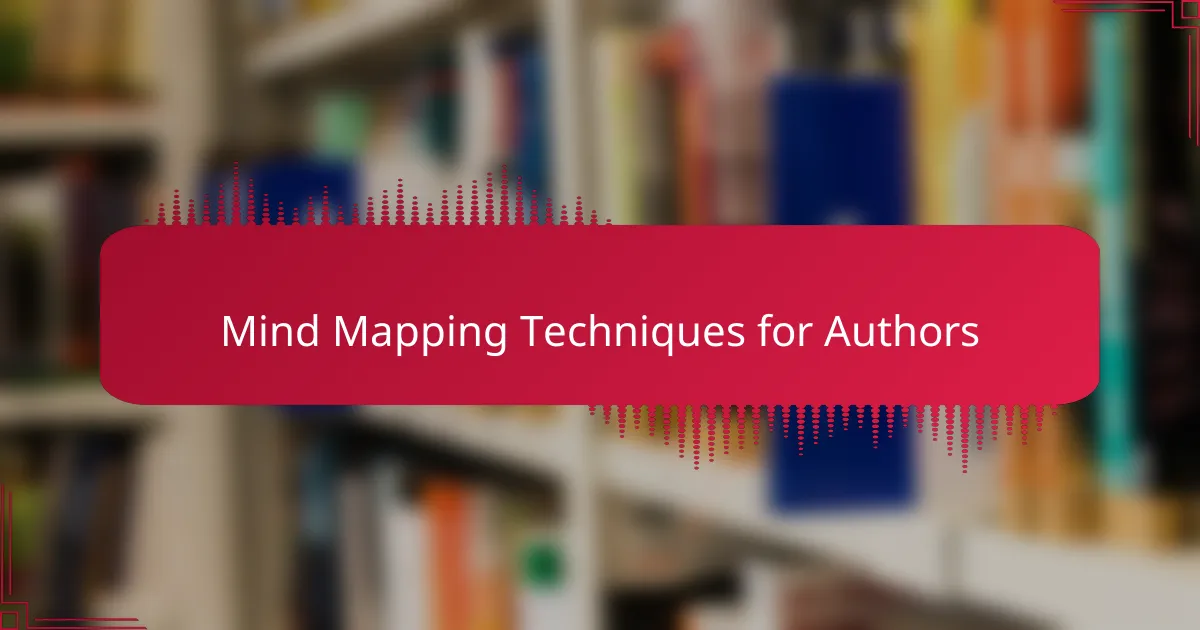
Mind Mapping Techniques for Authors
When I first encountered mind mapping, I found it to be an absolute game changer for my comic writing process. It allowed me to visually organize my thoughts, characters, and plot twists in a way that just made sense to me. For instance, when I was developing a new series, I created a mind map that connected not just the main storyline, but also smaller subplots and character backgrounds, enabling me to see how they intertwined effectively.
Here are some mind mapping techniques that I believe can greatly benefit authors, particularly those in comic writing:
-
Start with a central idea: Place your main concept or theme in the center to establish a clear focal point.
-
Use colors and images: Incorporating different colors and visuals can spark creativity and make connections more vivid.
-
Branch out with keywords: Write single words or short phrases for related ideas, allowing your thoughts to flow without getting tangled in lengthy descriptions.
-
Develop connections: Draw lines to connect ideas, showcasing relationships that might not have been immediately apparent.
-
Iterate frequently: Don’t hesitate to revisit and revise your mind map as your story develops; this flexibility helps keep your ideas fresh.
In my experience, regularly updating my mind map has made my comic narratives not only richer but also more cohesive.
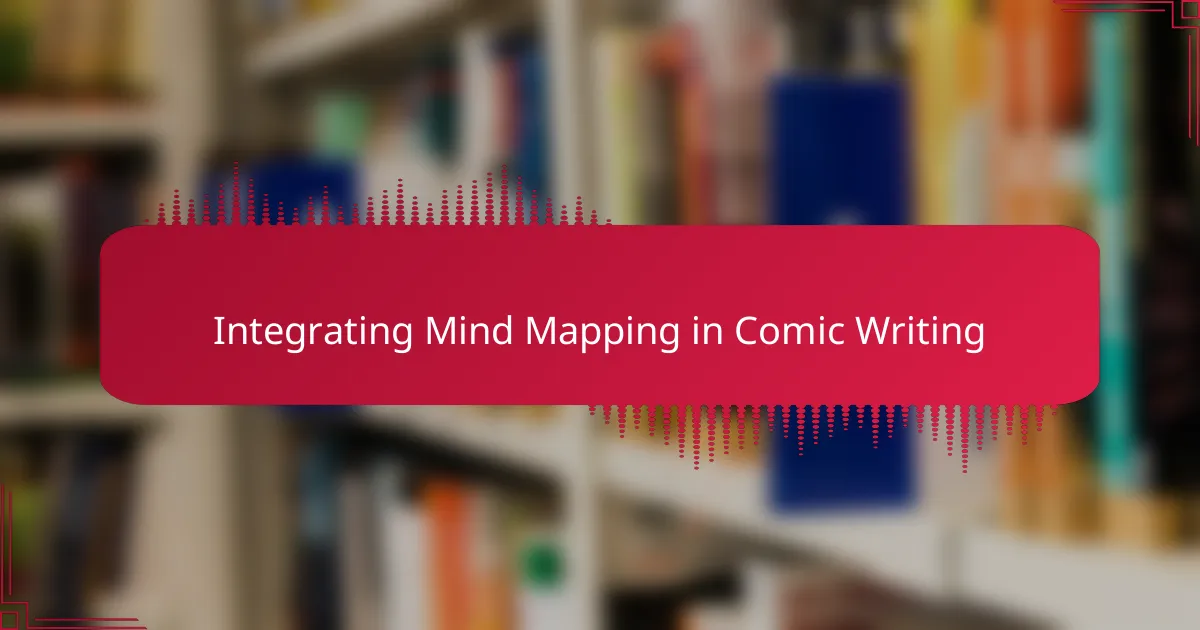
Integrating Mind Mapping in Comic Writing
When I integrate mind mapping into my comic writing process, I often find a sense of liberation that I hadn’t expected. For example, I remember working on a character-driven story where mind mapping allowed me to unravel the complex web of motives. By visually connecting each character’s background to their current actions, I discovered relationships that not only surprised me but also deepened the narrative.
One technique I particularly enjoy is using color coding in my mind maps. This simple addition transforms the process into a visually engaging experience. It’s amazing how different hues can trigger distinct emotions and ideas—my blue paths represent conflict, while greens might signify growth. Have you ever noticed how visuals can spark memories or insights? It’s like using a palette to paint a picture of your thoughts.
As I look back on my comic projects, the flexibility of mind mapping stands out. I often revise my maps as new ideas emerge, and each iteration feels like a new layer added to my narrative. It’s a personal journey, with ups and downs, but that adaptability allows my stories to evolve naturally, mirroring the organic process of creativity itself. How has experimentation with your own writing processes shaped your stories?

Personal Insights on Mind Mapping
I’ve come to appreciate mind mapping as a vibrant canvas for my ideas in comic writing. The first time I tried it, I felt a rush of excitement as the sketches and words began to visually connect on the page. It was like unlocking a vault full of potential. When I arrange my thoughts into branches and visuals, it not only portrays the narrative structure but also reveals depths I hadn’t explored before. Have you ever felt that thrill when a new idea suddenly clicks? It’s truly electrifying.
Another personal insight I’ve gathered is how mind mapping can help identify narrative inconsistencies early on. I recall a time when I was developing a plot twist and, through a mind map, noticed a logical gap that could have derailed the story. This visual approach not only clarified my ideas but also reinforced my excitement about the direction they were heading. It made me realize that sometimes, stepping back and seeing the whole picture can illuminate paths I hadn’t even considered. How often do you review your ideas from a fresh perspective?
Colors and visuals have also become essential elements of my mind maps. I remember choosing specific colors for different character arcs, and how impactful that choice was in shaping my writing process. It’s fascinating how color can evoke emotions and connections, much like the characters themselves in the narrative. This method turned my ideas into a more dynamic experience. Have you ever tried using color as a storytelling tool in your brainstorming? You might be amazed at the insights it uncovers!

Tips for Effective Mind Mapping
When I first started using mind mapping for my comic writing, I was amazed by how it cleared the mental clutter. By visually laying out my ideas, I could see connections that I hadn’t noticed before, making the plotting process smoother and more enjoyable. It felt like unraveling a tangled ball of yarn; suddenly, everything came together beautifully.
To make the most of mind mapping in your comic writing, consider these tips:
- Start with a central idea: Write down the main theme or character in the center of your map.
- Branch out with key elements: Create branches for plot points, character arcs, and settings, allowing for deeper exploration.
- Use colors and images: Incorporate visuals and different colors to represent various themes or characters, making the map more engaging.
- Keep it flexible: Don’t be afraid to change or add new branches as your story evolves; it’s all part of the creative process.
- Review regularly: Go back to your mind map periodically to refresh your perspective and spark new ideas.
These strategies not only enhanced my creative process but also turned writing into a more dynamic and less daunting task.
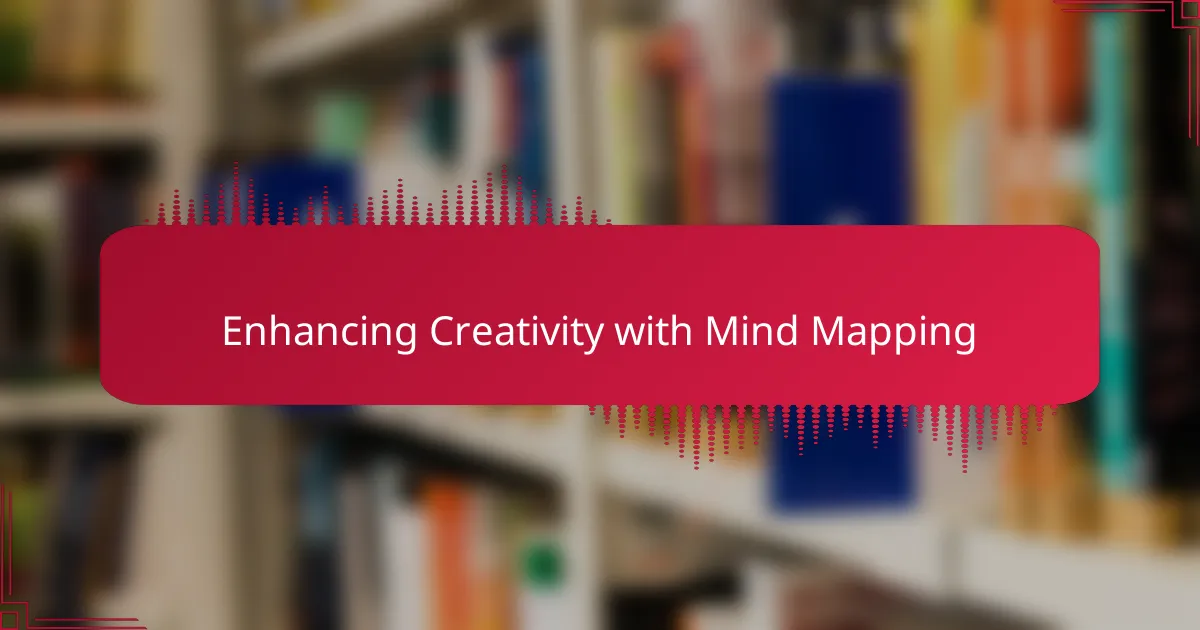
Enhancing Creativity with Mind Mapping
Using mind mapping has significantly expanded my creativity in comic writing. I’ve found that drawing visual connections between characters and plot points brings a real sense of clarity. I remember a time when I was juggling multiple storylines; mapping them out helped me visualize how they intertwined, revealing unexpected relationships that enriched the narrative. Have you ever experienced that moment when everything suddenly falls into place?
What truly excites me about mind mapping is how it encourages free association. I often let my thoughts flow—no constraints, just colors and lines. This unstructured approach not only stimulates my creativity but also fosters a playful exploration of ideas. I vividly recall developing a character who took a surprising turn in the story, and it all stemmed from a spontaneous idea I noted down during a mind mapping session. Isn’t it incredible how a simple twist can lead to something profound?
Moreover, using colors and images in my mind maps adds dimensions that words alone sometimes can’t capture. When I assign different colors to various arcs or themes, it helps evoke emotions and enhances my storytelling. I remember the thrill of creating a map where each color represented a specific character’s journey, turning the abstract into something tangible and inspiring. Have you ever thought about how visuals could elevate your own creative process? It might just spark the next great idea.
